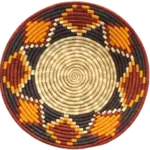About Tigray
Tigrai is the Northernmost of Ethiopias federal states located. The State of Tigrai shares common borders with Eritrea in the north, the State of Afar in the east, the State of Amhara in the south, and the Republic of the Sudan in the west.
It is in Tigrai state the over 4 thousand year old Axumaite kingdom was once very powerful and had tremendous influence around present day Rea sea countries. It left rich architectural and archaeological heritage of rock-hewn churches and monuments. It was a highly literate society, soon developing an alphabet called Geez, and it is from the language Geez that modern Tigringya, the language of Tigrai has evolved. Christianity was introduced in the fourth century to this to the kingdom of Axum. Its monasteries became centers for learning, translating Greek and Hebrew books, including the Bible in the fifth century. By the end of the sixth century Islam was introduced to the kingdom Axom in Tigrai.
The Axumite heritage is still important in Tigrai today. The oblisks from this era are still standing in Axum today. They symbolize national pride and consciousness for all Tigraians. Today Axum a small town in central Tigrai is a tourist magnet attracting tourists from all over the world.
Kafta-Shiraro National Park
Kafta-Sheraro National Park (KSNP), which was recognized as a Park in 2007, is situated in the northwest of Ethiopia. It presumed to have an estimated total area of 6000 square km. The park is located 600 km northwest of Mekelle the capital city of Tigray and is one of a few areas in the region which is relatively not densely populated and with relatively better natural vegetation. The Park is home to many ungulates, predators and other wild animal species.
Altitude ranges between 550m and 1800 m. The main rainy season is from July to September, with a short rainy season from February to April with mean annual rainfall about 400-650mm. The park conserves 42 mammals 167 birds and 9 reptile species. It has biodiversity and ecosystems with mosaic woodlands of Combretum-Terminalia, Acacia-Commiphora, Dry-evergreen montane, scrubland and riparian vegetation. It also hosts larger mammals such as Caracal, Aardvark, Roan antelope, African Elephant, Crested porcupine, Greater kudu, Defassa waterbuck, Dikdik, oribi, Black-backed jackal, Honey badger, Abyssinian hare, Aardvark, Leopard).
Attractions
is among the few in the world, frequently mentioned in civilization and cultural lists of humanity for its universally accepted historic sites. The state has some of the most important historical monuments of the continent.
Tigrai is very well known for its pre-Christian monuments. The Axum obelisks or Steles (2nd century BC), the pre-Axumite Yeha’s “Temple of The Moon” (5th century BC), bath and palace of the Queen Sheba and the Ark of the Covenant, are among the most prominent.
The Ark of the Covenant, is said to have been brought from the Temple in Jerusalem by the first king of Axum Menlik. Moreover, the region has served as entrance of the two world religions Christianity in the 4th century AD, and Islam in the 6th century AD into Ethiopia.
The mosque of Negash which is found in the Kilte-Awlaelo district of Tigrai is also another historical site.
There are more than 120 rock-hewn churches and caves that serve as monasteries scattered over the mountains of Tigrai, containing gold and silver crosses, glittering crowns, manuscripts and stones bearing ancient Sabean inscriptions. These and other cultural heritages are priceless assets of the country.
Tigray mountain Churchs
Every church has its own oral tradition regarding its excavation, in many cases the church is dated to the reign of Abreha-we-Astebeha the twin Emperors of Axum who converted to Christianity in the middle of the 4th century.
There are a number of explanation given as to why the rock-hewn churches of Tigrai were so often carved in to relatively inaccessible cliff face, was it for security, or for spiritual isolation, or simply because cliff face are inherently good place to carve churches and cliff face are inherently inaccessible?
